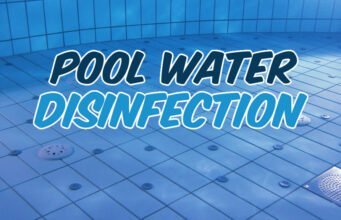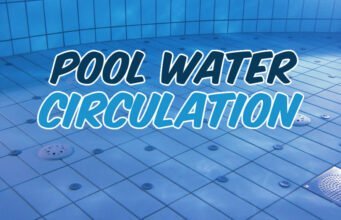The installation of a chlorine generator is a highly sought-after service as this type of equipment serves as an excellent disinfection system for pools and can assist or even eliminate the manual addition of chlorine to the pool.
THAT’S RIGHT! IT’S NOT AN EXAGGERATION TO SAY THAT “IT CAN ELIMINATE THE MANUAL ADDITION OF CHLORINE TO THE POOL!”
Currently, the chlorine generator is the most modern in pool automation and takes away the headaches of those who need to keep the pool clean and healthy.
The chlorine generator uses electrolysis of saltwater to produce chlorine for pool disinfection. It has several advantages over traditional chlorination methods.
It allows for automatic and precise control of chlorine levels, making it easier to maintain clean and crystal-clear water.
Moreover, the chlorine generator significantly reduces the handling of potentially hazardous chemicals. Chlorine is naturally produced from salt present in the water, making the process much safer and trouble-free.
Some chlorine generator models for pools also come with automatic restart, protection against lack of water flow, and different levels of chlorine production. You can count on these qualities while still enjoying convenience and energy efficiency.
However, to fully enjoy all the benefits of this chlorine-producing equipment, correct installation is essential. In this article, you will learn step-by-step how to install the chlorine generator in your pool.
Before installing the chlorine generator
Check the pipe diameter
Before starting the installation of the chlorine generator, it is essential to verify if the diameter of the pipes in the pool’s plumbing is compatible with the connections of the device. The standard size for residential models is usually 50mm or 1.5 inches. Using pipes of a different size can hinder water flow and the chlorine production of the equipment.
Close connected valves
All valves on the pipes that will be connected to the chlorine generator must be tightly closed before starting the work. This prevents leaks and accidents during the installation process. The valves should only be gradually reopened after completing the installation and performing tests to check for possible leaks.
Clean pipes and connections
Thoroughly cleaning the pipes and connections is essential. Any dirt, residue, or oily components still present in the pipes and connections where the generator will be installed should be removed. The presence of impurities can hinder the equipment’s operation.
Read the manufacturer’s manual
Before executing any installation step, it is imperative to fully and carefully read the chlorine generator’s instructions manual provided by the manufacturer. Each model may have particularities, so following the manual’s guidelines helps avoid errors that could compromise the equipment’s optimal performance.
Where to install the chlorine generator
Always after the filter and pump
The correct location for installing the chlorine generator is after the filtering and water pumping equipment. In other words, the generator should be the last device in the return line, receiving the already filtered water.
INSTALLING THE GENERATOR BEFORE THE FILTER CAN CLOG THE ELECTROLYSIS CELLS WITH DIRT AND DEBRIS.
In a well-ventilated area
The generator should be installed in an open and well-ventilated area. This allows for better dissipation of the heat generated by the equipment, preventing overheating. Leave at least 15 cm of space on the sides and above the generator to facilitate air circulation.
In fact, this rule should be followed for the construction of the machine room itself. Every machine room should be well-ventilated, but in practice, we know that this is not the reality of most pool hydraulic installations.
With protection against rain
The chosen area needs to protect the equipment from rain, splashes, and excessive humidity. The presence of water can damage the chlorine generator’s electronic components.
How to install the chlorine generator
Confirm the direction of water flow
Before making the connections, ensure that the direction of water flow in the generator matches that of the pool’s plumbing. Many models have indicative arrows.
Installing it in the wrong direction, although absurd, is a recurring mistake in technical assistance services, after all, the equipment has an inlet and an outlet, and they are very similar for an inattentive person or someone who does not know well what they are doing.
IF IT IS INSTALLED INVERTED, THE EQUIPMENT MAY BE DAMAGED, AND CHLORINE PRODUCTION WILL BE IMPOSSIBLE.
Use specialized adhesive
When connecting the fittings and adapters to link the chlorine generator to the plumbing, use adhesive specific for PVC, following the manufacturer’s instructions. Any other substance used to connect the chlorine generator to the plumbing can hinder a perfect seal and cause leaks.
Connect to the external power adapter
The chlorine generator is powered by an external power adapter of 110-220V that must be connected to a dedicated and protected electrical outlet. Never try to connect it directly to the electrical network without the adapter, as it can cause severe damage to the equipment and the risk of electrical shocks.
Protect electronic components
After the water and power connections, ensure that all electronic components are properly protected and isolated, away from possible splashes and humidity. This prevents short circuits and increases the product’s lifespan.
Following these steps correctly, there will be only a few initial adjustments left before the chlorine generator is truly ready to start its operation fully and safely.
Initial adjustments after installing the chlorine generator
After completing the chlorine generator’s full installation, including hydraulic and electrical connections, some initial adjustments are still required before operating the equipment.
These adjustments ensure that the generator starts its work under ideal conditions and produces chlorine efficiently and safely from the very beginning.
Open valves slowly
As soon as the generator is properly installed, the input and output valves that were previously closed should be gradually reopened.
This allows water to fill the pipes correctly, expelling any residual air from the plumbing. Opening the valves all at once can cause a “water hammer” effect and damage the equipment.
After fully opening the valves, check for any leaks in the connections made, and if you notice any dripping, tighten the connections again or redo the adhesive bonding with PVC.
Adjust the salt level in the water
Before turning on the chlorine generator, the salt concentration in the pool water must be within the recommended level, which is usually 3,500 ppm for most residential pool models.
This measurement should be made with a specific salinity analysis device. If the level is below the appropriate range, add salt until the ideal range is reached. This ensures optimal electrical conductivity for the electrolysis process to occur perfectly.
Configure the initial chlorine production
As soon as the chlorine generator is turned on for the first time, it automatically assumes an initial chlorine production configuration, which is usually the minimum level.
However, it is recommended to adjust the chlorine production to the most suitable level for your pool’s water volume at this moment, according to the manufacturer’s specifications.
This prevents you from gradually increasing the level later. The equipment will already start producing the ideal amount of chlorine necessary for adequate water disinfection from the beginning.
By correctly completing these initial adjustments, the chlorine generator will be ready for perfect operation, immediately producing the necessary residual to eliminate algae, bacteria, viruses, and other microorganisms, keeping the pool water crystal clear and healthy.
Conclusion
Properly installing the chlorine generator is crucial to enjoying all the benefits of this equipment that produces chlorine through salt electrolysis.
By strictly following the step-by-step guide presented in this article, you can perform the complete installation safely and efficiently.
- Choose the right location, checking ventilation and protection against the elements, as well as positioning the generator always after the filtering equipment.
- Observe the direction of water flow, perform hydraulic installation using PVC adhesive, connect it correctly to the power supply through the external adapter, and protect all electronic components.
- Make the initial adjustments, such as gradually opening the valves, adjusting the salt level in the water, and programming the most suitable initial chlorine production for the pool.
By correctly and carefully completing the entire installation, the chlorine generator will be ready to work fully, producing the necessary chlorine to keep the water clean and healthy for a long time.
Furthermore, a well-done installation increases the equipment’s lifespan, reduces maintenance costs, and ensures the best performance in chlorine production through salt electrolysis.
Therefore, even though the process may seem complex at first glance, following the tips in this article will enable you to properly install your chlorine generator, enjoying all the convenience and quality of this phenomenal equipment for pool water treatment.
Do you have any questions about chlorine generators for pools?
If you have any questions regarding the installation of pool chlorine generators, leave them in the comments section below. The community is always ready to discuss and debate all kinds of topics related to pools.
It is worth remembering that, even if you know exactly what is needed to install equipment like this, it is always good to rely on qualified professionals to do this type of installation. If possible, contact the manufacturer or the pool store you trust and ask for a professional recommendation to install your chlorine generator.
If you liked it and want to show your appreciation for my work, we have a crowdfunding campaign starting. You can participate, but only if you want to, okay?
Big hug, and see you next time!







